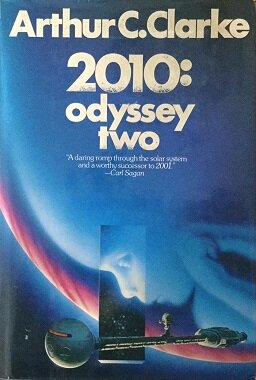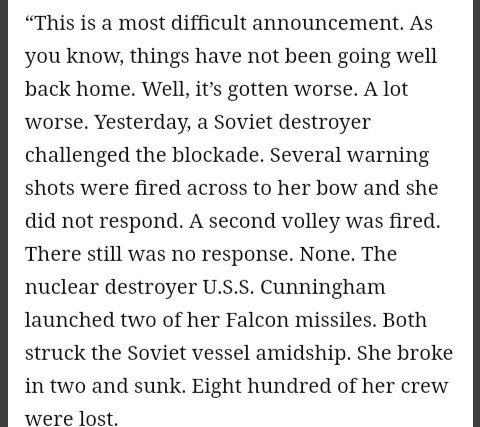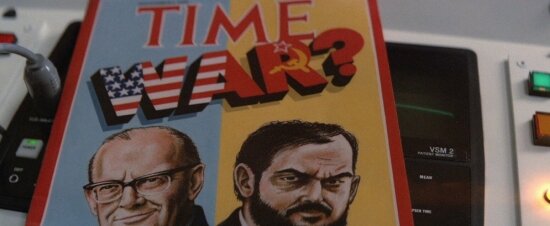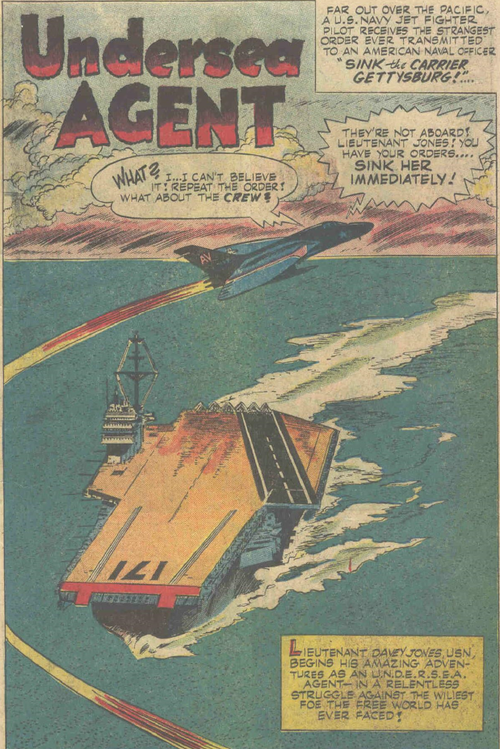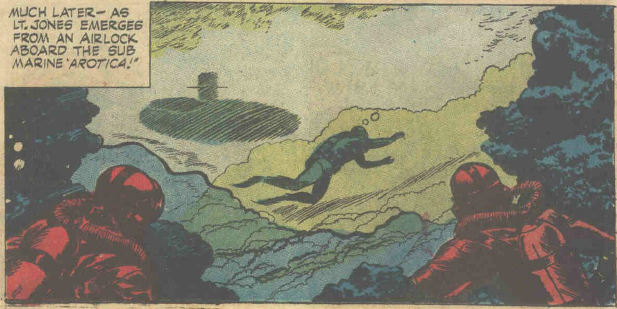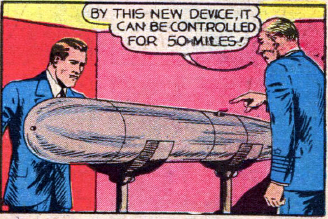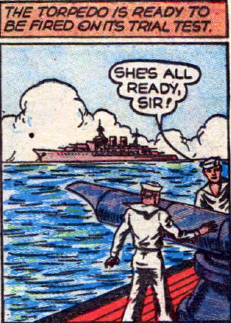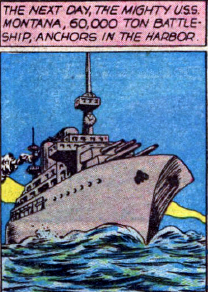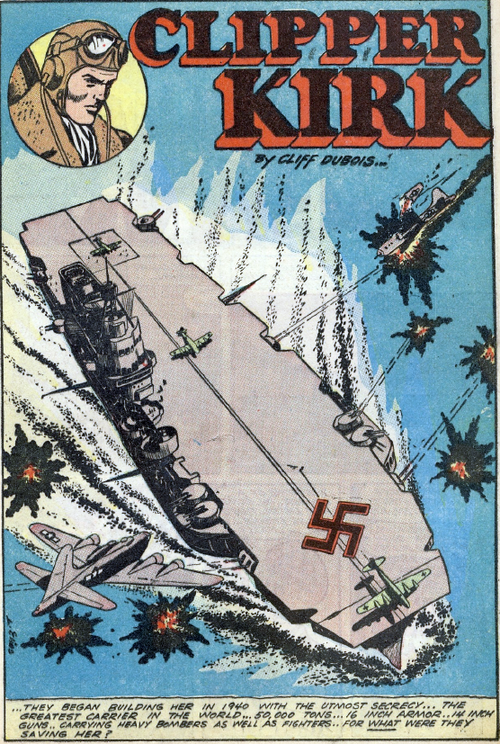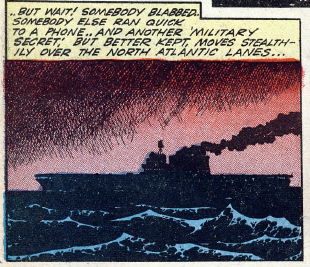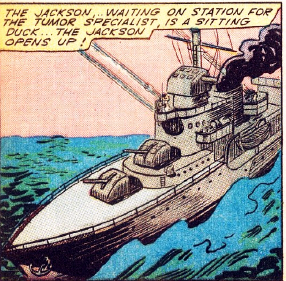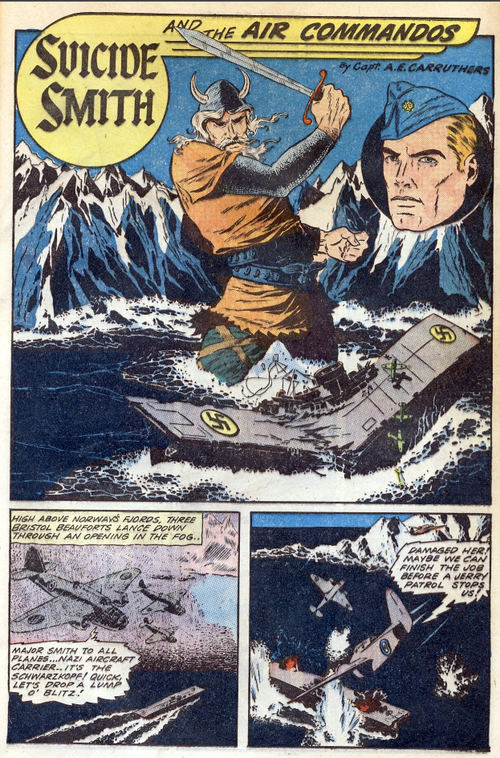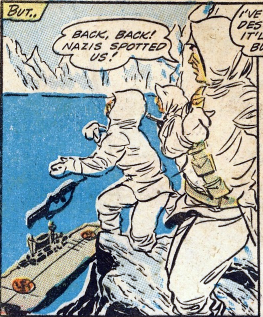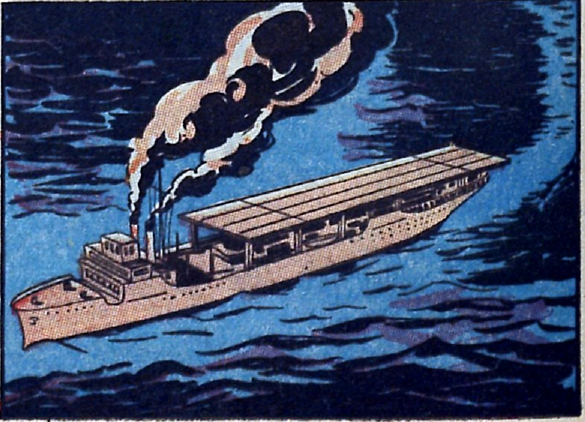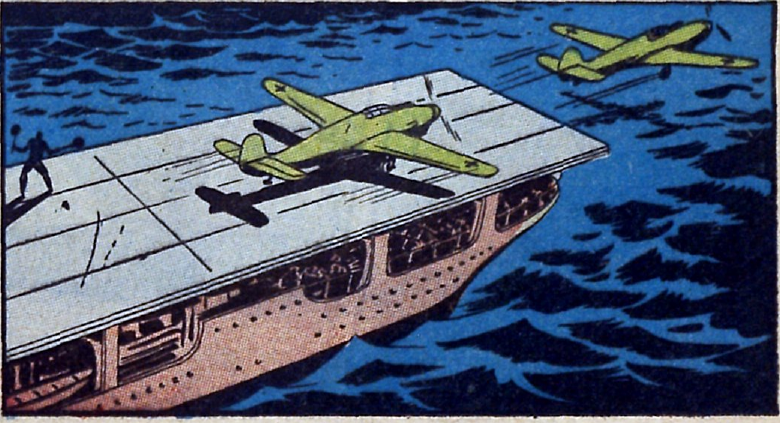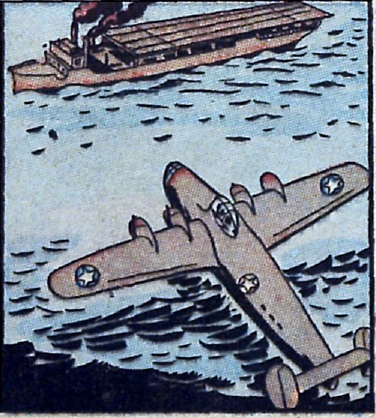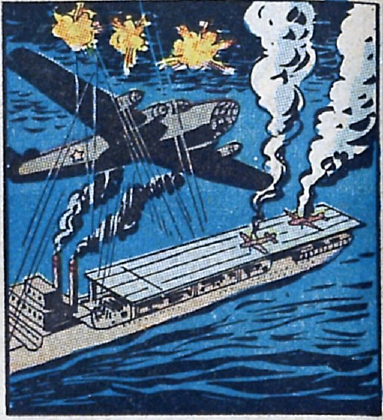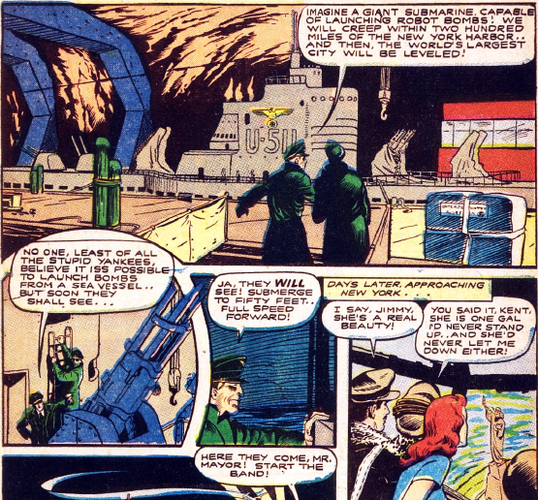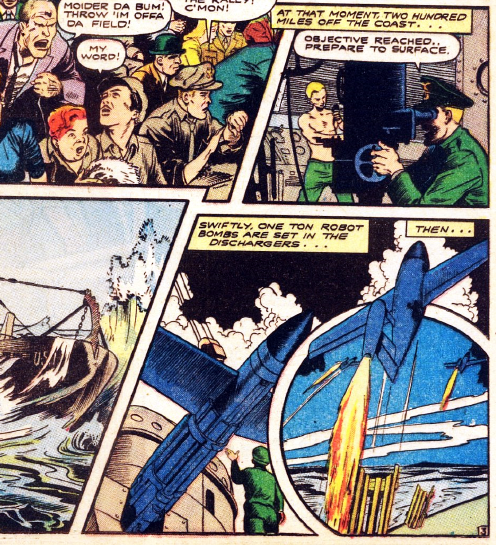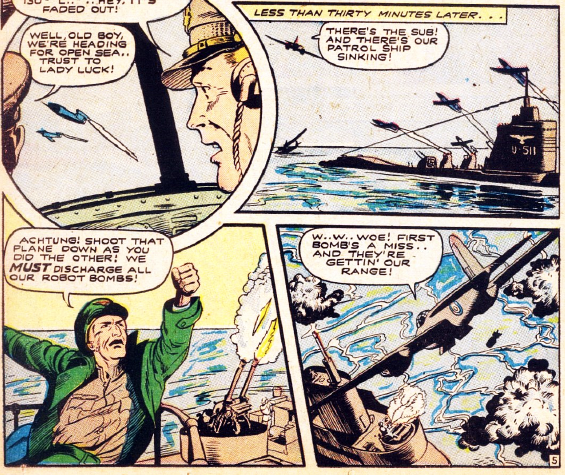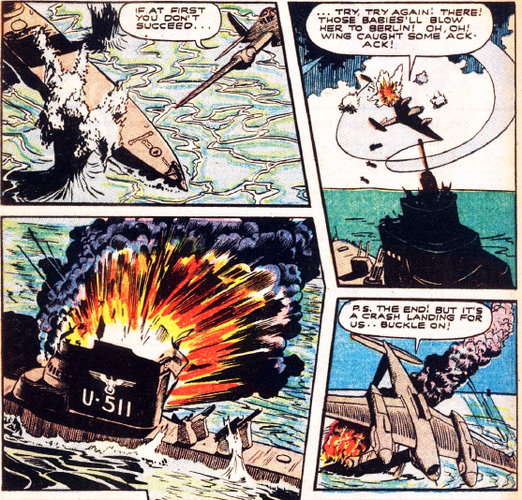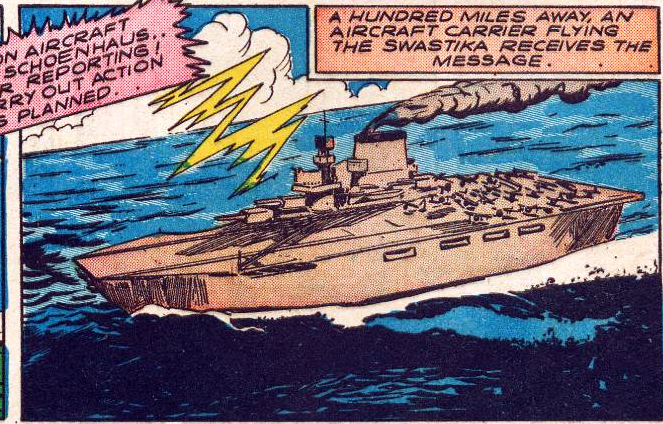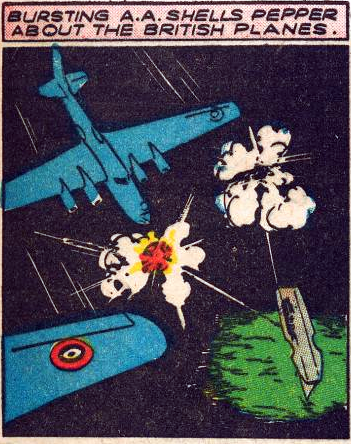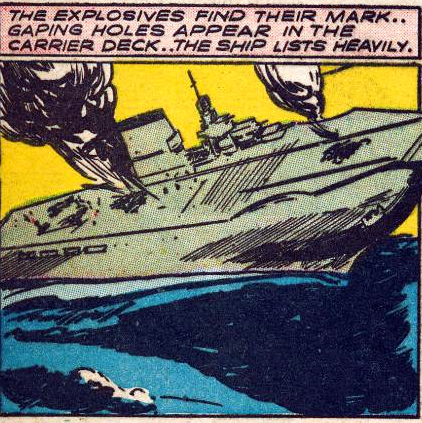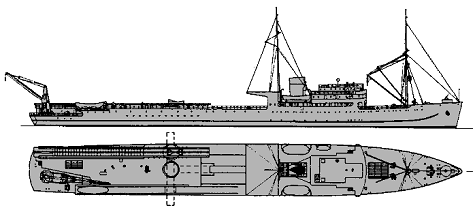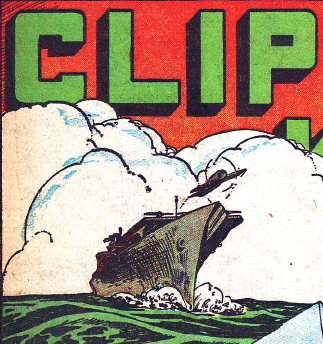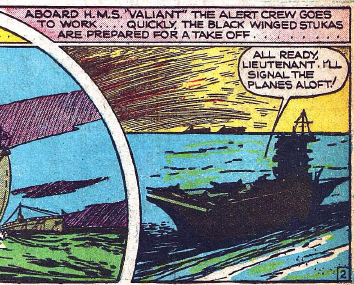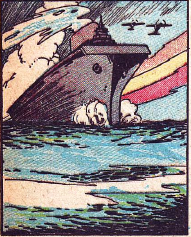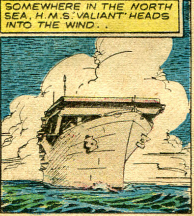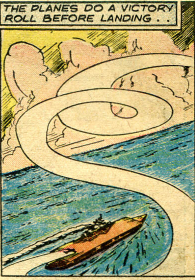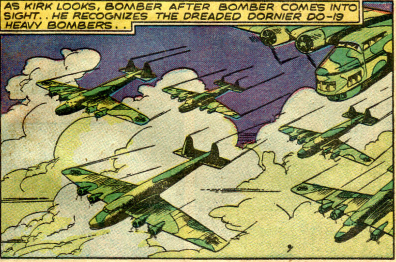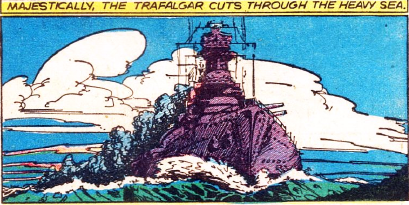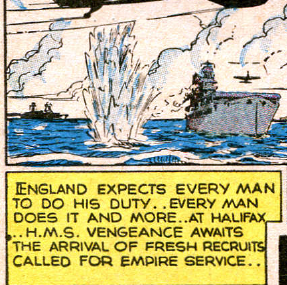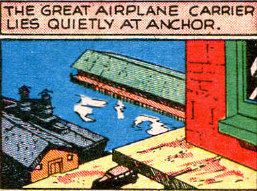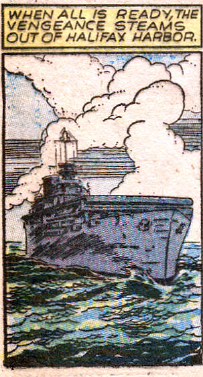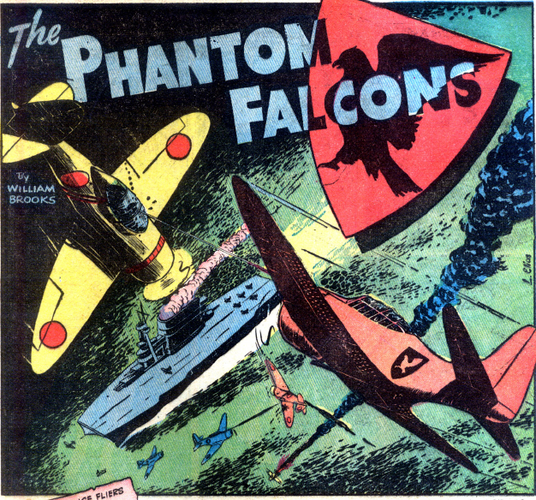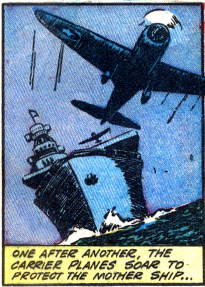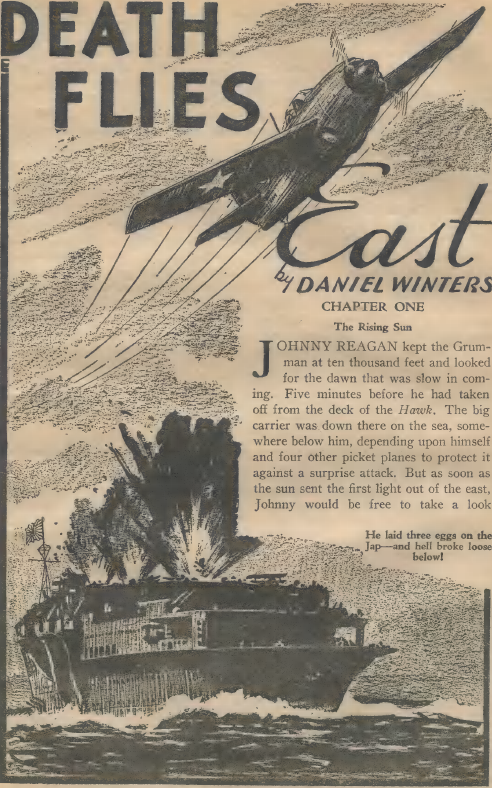- Joined
- 16 December 2010
- Messages
- 3,756
- Reaction score
- 4,101
An unexpected find on the Internet Archive...
Edward Grant (Pseud?), The Ultimate Weapon, 1976
United States
USS Devilfish
Prototype SSN
Propulsion: Twin Screw. Each screw is mounted in an external pod and rather than being mechanically linked to the ships engines they are electromagnetically linked.
Speed (Submerged): 80knots(+), surfaced speed is unspecified.
Crew: 60 (75 in times of war.)
Crush Depth: 3miles (4828.032meters)
Hull: Entirely composed of fiberglass, hull thickness, 4in (102mm) (Note: This is presumably the maximum thickness...)
Hull form: "...Devilfish's four inch thick fiberglass hull had great streamlined wings flaring out to either side of the central cigar, which made her look like a giant manta ray..."
Armament: "Four heavy missile-launching tubes were mounted aiming outward on either side of her sail. They could carry either cruise missiles to strike at enemy warships and merchant vessels or homing antiaircraft missiles..."
2 x 21inch TT (Location not specified). Torpedo magazines are in the submarines wings and hold 50 torpedoes in total. The tubes are fitted with an autoloader mechanism and use chemically generated steam pressure to launch the torpedoes.
Description: "All that showed of Devilfish above water was her high, thin sail, part of her rudder and the upper portion of her cigar shaped central hull. When she was in the water her great wings were completely submerged and it was impossible to distinguish her from a standard submarine."
Also carried aboard is an unnamed minisub and an experimental device called the Mk II Food Processor (The 'Mk.I' was the initial prototype.). This is a machine that can take all organic waste products produced on the submarine and convert it into food.
Only member of class
No other details provided
Note: Not directly under the Navy's chain of command, but assigned to the Office of Special Submarine Operations (OSSO).
Russia (Soviet Union)
Thunderbolt/Molniya
Submarine (SSN), class not specified.
Crew: 90
Speed: 45knots+
No other details provided
Note: As I was reading the story I was getting the impression that this submarine was intended to be a Soviet Alfa (Pr. 705) Class Submarine, based off what was known/speculated about the class in the West at the time. But there are no specifics provided in the novel to confirm this speculation.
W-211
Submarine, class not specified
No other details provided
Plot summary: A prototype submarine is fitted with a new system one that promises to free US submarines from the last major constraint to true submarine operations outside the need to re-arm. Of course the Russians want that technology too...
Note: The novel is copyright Lyle Kenyon Engle, a 'book packager' who specialized in coming up with ideas for action series. The most well known of these is the 'Nick Carter' series that ripped off 'James Bond'. It is quite likely the authors name credited is a pseudonym for one of the authors working for Engle and that this novel was intended as the first in an action series inspired by the Irwin Allen TV series 'Voyage to the Bottom of the Sea' that did not come off.
Edward Grant (Pseud?), The Ultimate Weapon, 1976
United States
USS Devilfish
Prototype SSN
Propulsion: Twin Screw. Each screw is mounted in an external pod and rather than being mechanically linked to the ships engines they are electromagnetically linked.
Speed (Submerged): 80knots(+), surfaced speed is unspecified.
Crew: 60 (75 in times of war.)
Crush Depth: 3miles (4828.032meters)
Hull: Entirely composed of fiberglass, hull thickness, 4in (102mm) (Note: This is presumably the maximum thickness...)
Hull form: "...Devilfish's four inch thick fiberglass hull had great streamlined wings flaring out to either side of the central cigar, which made her look like a giant manta ray..."
Armament: "Four heavy missile-launching tubes were mounted aiming outward on either side of her sail. They could carry either cruise missiles to strike at enemy warships and merchant vessels or homing antiaircraft missiles..."
2 x 21inch TT (Location not specified). Torpedo magazines are in the submarines wings and hold 50 torpedoes in total. The tubes are fitted with an autoloader mechanism and use chemically generated steam pressure to launch the torpedoes.
Description: "All that showed of Devilfish above water was her high, thin sail, part of her rudder and the upper portion of her cigar shaped central hull. When she was in the water her great wings were completely submerged and it was impossible to distinguish her from a standard submarine."
Also carried aboard is an unnamed minisub and an experimental device called the Mk II Food Processor (The 'Mk.I' was the initial prototype.). This is a machine that can take all organic waste products produced on the submarine and convert it into food.
Only member of class
No other details provided
Note: Not directly under the Navy's chain of command, but assigned to the Office of Special Submarine Operations (OSSO).
Russia (Soviet Union)
Thunderbolt/Molniya
Submarine (SSN), class not specified.
Crew: 90
Speed: 45knots+
No other details provided
Note: As I was reading the story I was getting the impression that this submarine was intended to be a Soviet Alfa (Pr. 705) Class Submarine, based off what was known/speculated about the class in the West at the time. But there are no specifics provided in the novel to confirm this speculation.
W-211
Submarine, class not specified
No other details provided
Plot summary: A prototype submarine is fitted with a new system one that promises to free US submarines from the last major constraint to true submarine operations outside the need to re-arm. Of course the Russians want that technology too...
Note: The novel is copyright Lyle Kenyon Engle, a 'book packager' who specialized in coming up with ideas for action series. The most well known of these is the 'Nick Carter' series that ripped off 'James Bond'. It is quite likely the authors name credited is a pseudonym for one of the authors working for Engle and that this novel was intended as the first in an action series inspired by the Irwin Allen TV series 'Voyage to the Bottom of the Sea' that did not come off.

